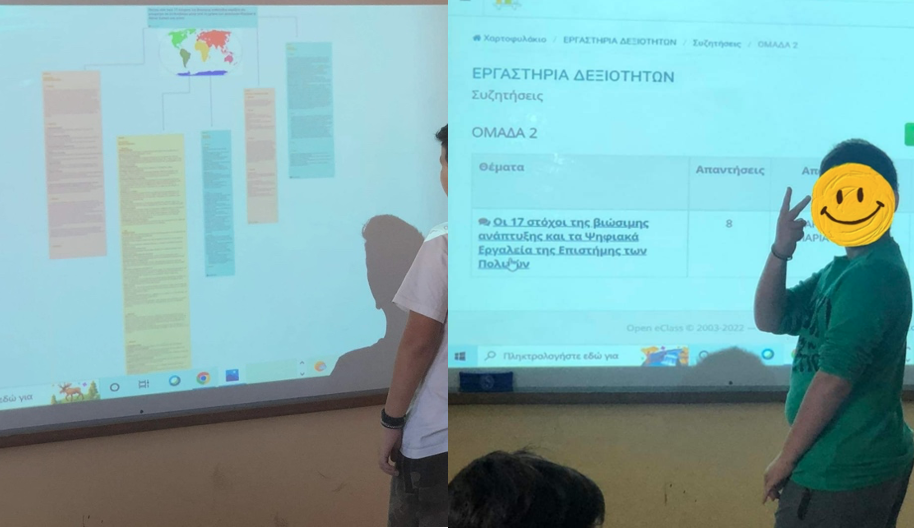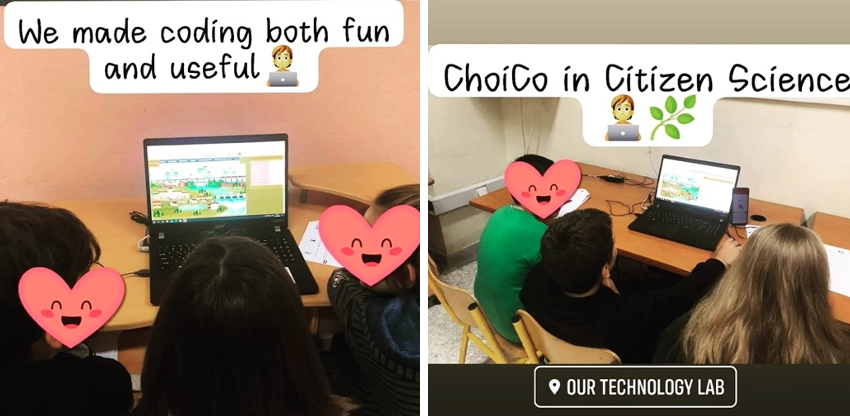Post written by Maria Kyriakidou, 4th Primary School of Kaisariani.
This specific educational program is an educational scenario of 7 (in class) teaching hours in a mixed teaching model (synchronous and asynchronous) that was implemented within the framework of the Skills Workshop, under the Thematic Unit “Taking care of the Environment”.

Being part of a Design Based Research project of a postgraduate diploma “Digital Transformation and Educational Practice”, it is a case study that explores the assessment of learning for E.S (Environmental Studies) of the Citizen Science Digital Tools (mentioned above) in the standard educational context and the subsequent gamification of these tools in the open online software ChoiCo of the Educational Technology Laboratory of the E.K.P.A University.
Educational aims
This educational scenario was designed:
1) To cultivate students’ environmental awareness through observing and recording their findings using digital tools of Citizen Science Observatories,
2) To highlight their importance in relation to their awareness as well as taking personal responsibility regarding the problems of their environment and finally searching for solutions to possible problems.
3) To technologically enhance and transform their entire educational experience from the Citizen Observatories to a ChoiCo gamification environment.
Methodology
The designed activities in the context of collaborative action of heterogeneous groups, following the methodology of Design Thinking, are gradually focused on completing the 4 phases of this methodology:
- Identification of the problem
- Definition of the problem
- Development of a solution
- Application of a solution.

For the 1st phase, after an introductory information framework for the 17 goals of Sustainable Development was preceded, familiarization and exploration activities of the digital tools were planned in a free context, first by utilizing the school environment (school garden and yard) with the presence of the teacher and then by exploring the environment that corresponds to each student individually in relation to their usual routes from home to school, to tutoring, to sports and to other activities.
The corresponding groups of students were created on the Pl@ntnet platform, in order to register their observations by group and to ensure synchronization and cooperation between them.
For Odour Collect, the map of the digital tool Padlet was used, in order to register all the children’s odours in real space, while being accessible at anytime to all groups of students for the later phases of the educational scenario.
The children kept an observation diary which they then shared on the online classroom blog of the relevant activity.
In the 2nd phase of the activities, the students participated in interesting discussions about their experience, creating conceptual maps and identifying environmental quality problems in order to propose possible solutions or improvements.

In the 3rd and 4th phase of the activities, the children entered the ChoiCo environment, where they were asked to modify a “half-baked” game created by the teacher, making, per group, their own new version of the game, based on their previous knowledge and experience of the digital tools of Citizen Science. The goal was (through the re-development of the game) to increase students’ environmental awareness and empathy as well as creating a space for problem- solving and for proposing solutions.

Notes: You can also watch this video- project called 4 weeks along with Pl@ntnet, which is a digital storytelling that I created, based on an earlier journal regarding the acquaintance and first implementations of Pl@ntnet in class. It was used in the educational scenario above.

















